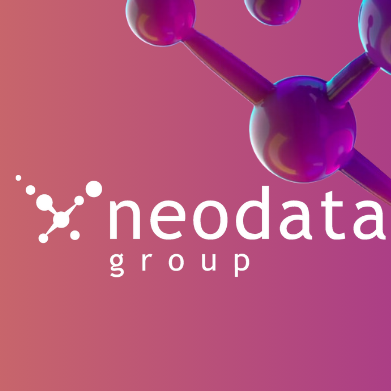Table of Contents
- Building an integrated behavioral model
- How AI and algorithmic models made it possible
- What the data revealed
- From Causality to Prediction: Anticipating Digital Behavior with AI
- Neodata’s role in advancing behavioral AI
- Moving forward
Nowadays, every action we take, whether it is physical or virtual, leaves a trace. A walk in the park, a photo posted on Instagram, a moment of stillness before sharing a thought. These actions may seem unrelated, but are they really? Could there be a connection between what we do physically and how we behave online?
This is the core question explored by ABITS (Adaptive Behavioral Insights and Technology Smart Solutions), a collaborative research project led by Neodata Group together with the University of Catania. The project is developed within SAMOTHRACE, part of the PNRR (National Recovery and Resilience Plan), through the Sicilian Micro and Nano Technology Research and Innovation Center.
The goal is to investigate how our physical activities interact with our social media behavior, using artificial intelligence to uncover patterns that would otherwise remain invisible.
Building an integrated behavioral model
ABITS introduces a new approach to behavior analysis by merging two traditionally separate data streams: physical movement and digital interaction. To achieve this, the research team collected physical activity data using smartphones, leveraging accelerometers and gyroscopes, and combined it with voluntarily shared social media activity data from Instagram, all within a GDPR-compliant framework.
How AI and algorithmic models made it possible
At the heart of the project lies a robust AI-driven methodology. The team employed deep learning architectures specifically designed for time-dependent and spatially aware data. One of the most effective models used was ConvLSTM, a convolutional long short-term memory network. This model is particularly suited for tasks that require understanding of both spatial (movement patterns) and temporal (sequence of events) information.
ConvLSTM was trained to recognize different types of physical activity, such as walking, standing still, or running, based on data from smartphone sensors. These recognized activities were then linked with timestamps from Instagram activity to form the foundation of the behavior analysis.
Rather than analyzing continuous time series, the team adopted an event-centered approach. This method focuses on short time windows before and after a specific digital event, such as posting a photo or updating a status. It analyzes what type of physical activity occurred around that event.
What the data revealed
By applying Pearson correlation analysis to normalized activity data and categorized Instagram posts, the team uncovered clear patterns. The strongest correlations were observed within 1 to 5 minutes before or after a social media post. Specifically:
- Users were more likely to be walking before posting a photo
- They were often still before updating their status
- There were negative correlations when users were inactive before posting a photo, or running before sharing a video
These findings suggest that physical activity does not merely accompany our digital behavior, but may also influence or anticipate it.
To explore the possibility of a predictive relationship, the study applied Granger causality analysis. This statistical method tested whether physical activity could be used to forecast future Instagram activity. The results showed that physical movement could predict social media interaction within very short time frames, again, 1 to 5 minutes, with this predictive effect weakening after 10 minutes and disappearing entirely after 30.
In contrast, the inverse scenario, where social media use predicted subsequent physical activity, yielded weak and inconsistent results. This implies that, at least in the short term, our physical behavior is more likely to influence our digital actions than the other way around.
From Causality to Prediction: Anticipating Digital Behavior with AI
After identifying short-term causal links between physical activity and Instagram use through Granger analysis, the ABITS team developed a predictive model using LSTM neural networks. These models were tuned to capture short-term motion patterns preceding social media engagement.
Configured with a consistent two-step lag, the LSTM estimated the likelihood of a digital event based on recent activity. Results showed that transitions—like Sitting to Standing or Stairs to Standing—strongly predicted upcoming Instagram interactions (with probabilities between 0.74 and 0.82), while steady states like continuous Walking were not predictive (below 0.05).
This confirms that behavioral shifts, rather than sustained activity, are key indicators of social engagement. The model extends causal insights into real-time prediction, marking a critical step in the ABITS pipeline from sensing to forecasting behavior.

Neodata’s role in advancing behavioral AI
Neodata Group played a key role in all phases of the project, from defining the analytical framework to developing and training the AI models. With deep expertise in big data, algorithm development, and behavioral intelligence, Neodata provided the technical backbone and vision for the project.

By leading the integration between physical and digital data, Neodata helped demonstrate how artificial intelligence can be used not only to process information but to understand how people behave in the real world.
Through ABITS, Neodata confirmed its mission to deliver human-centered innovation. This project is a clear example of how collaboration between industry and academia can lead to powerful new insights with potential applications in digital health, behavior-driven marketing, and next-generation data personalization.
Moving forward
ABITS shows us that the boundary between the physical and digital self is more porous than ever. It reveals how immediate experiences, like movement or stillness, are closely linked with how we express ourselves online.
For Neodata, this is not just an academic insight but a foundation for building smarter, more intuitive systems that connect data, people, and technology in meaningful ways. The company remains committed to pushing the boundaries of what AI can do to help us better understand and anticipate human behavior.

Neodata AI Team
As Neodata, we provide data, insight, articles, and news related to AI and Big Data.
-
Neodata AI Team#molongui-disabled-link
-
Neodata AI Team#molongui-disabled-link
-
Neodata AI Team#molongui-disabled-link
-
Neodata AI Team#molongui-disabled-link